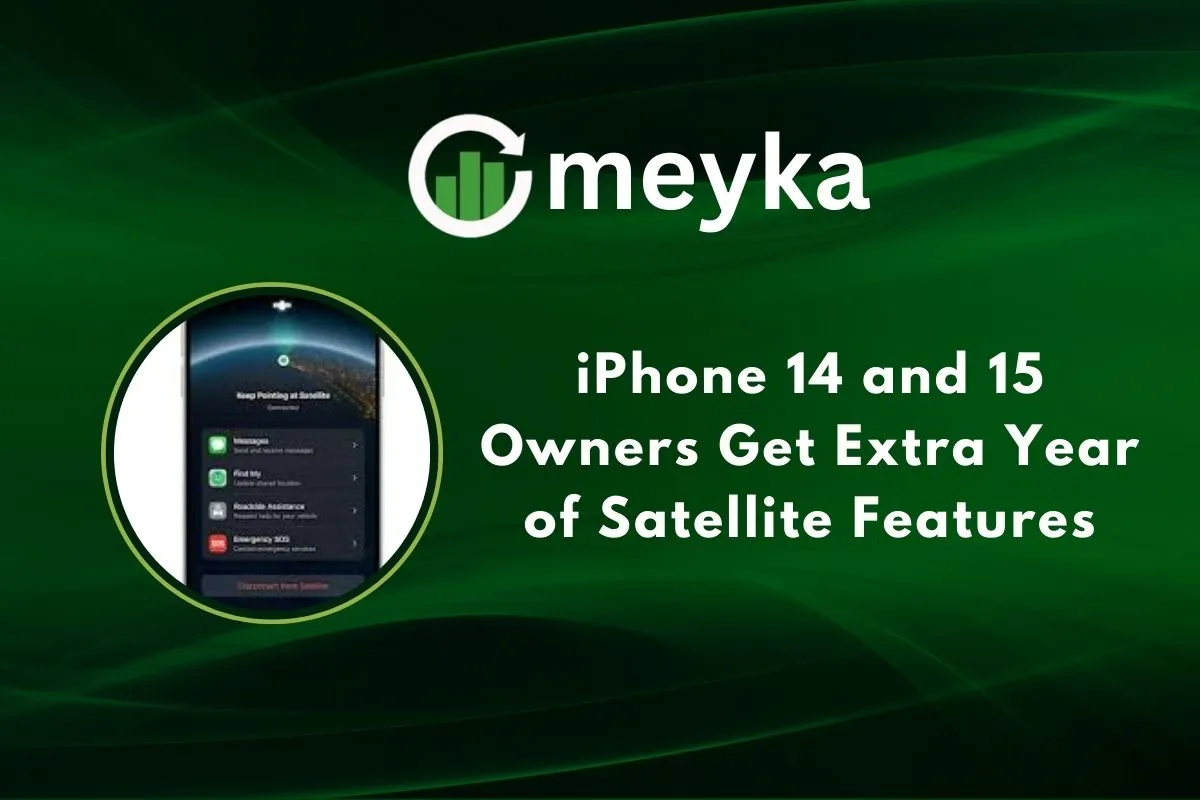iPhone 14 and 15 Owners Get Extra Year of Satellite Features
Apple has given iPhone 14 and iPhone 15 owners a welcome surprise: an extra year of free satellite features. These tools, like Emergency SOS and Roadside Assistance, connect our phones to satellites when cell signals are out of reach. That means help can still find us in the middle of a mountain hike, on a remote road, or even in places with no network at all.
We live in a time where staying connected is not just about convenience. It’s also about safety. Apple’s move shows how the company wants to make life-saving technology more accessible before asking users to pay for it. For us, this raises a big question: are satellite features becoming the new standard for smartphones?
We’ll investigate what the extension means, how it works, and why it matters for both iPhone users and the wider tech world.
Background: Apple’s Satellite Features
When Apple launched the iPhone 14 in November 2022, it introduced Emergency SOS via satellite, letting users call for help even with no cell or Wi-Fi signal. Later, Apple added satellite messaging and roadside help. These features work through Globalstar satellites. They guide us to point our phone at the sky and send compressed texts to emergency responders.
Satellite Features started in limited countries, then expanded with iOS updates. Today, they include Emergency SOS, satellite-based Find My, iMessage support off-grid, and Roadside Assistance in places without cell coverage.
The Extra Year Offer
Apple has confirmed that iPhone 14 and 15 users will enjoy an extra year of free Satellite Features. This applies to devices activated before September 9, 2025, in supported countries. That means your free access now runs until November 2026, giving you more time to stay connected when it matters most.
This marks the third free extension since the feature first rolled out. No pricing plans have been revealed yet. It’s clear Apple values keeping people safe, even if it means delaying charges for critical tools.
Why It Matters for iPhone Users
Satellite Features can save lives. We’ve all been stuck in dead zones, on remote roads, while hiking, or deep in nature. These tools help us call for help no matter where we roam.
Having a full year of free access adds value. It gives us time to test, trust, and truly benefit from these safety tools before any charges start. It also makes iPhone 14 or 15 feel more like a long-term safety investment, without breaking the bank.
Industry Impact
Apple’s move raises the bar in smartphone safety. Other brands may feel pressure to offer similar features. Emergency tech now comes from space, not just towers.
Right now, Android brands haven’t matched Apple’s full satellite feature suite. And Apple’s collaboration with Globalstar shows how a big tech company can reshape safety with satellite partners.
Future of Satellite Connectivity in iPhones
We wonder: Will Apple make Satellite Features a paid service someday? It could become part of iCloud+ or Apple One. But there’s a risk: charging for emergency access may attract backlash; no one wants to pay to call for help.
Apple is also expanding satellite support. The Apple Watch Ultra 3 now includes satellite tools; you can share your location every 15 minutes, even off-grid. Soon, satellite features could reach more devices, maybe even become a standard option across health and safety apps.
Consumer Perspective: Benefits vs. Limitations
Benefits:
- Real safety when out of range.
- No extra cost, for now.
- Works in remote zones, islands, and deserts.
Limitations:
- Works only in supported regions.
- Mostly text-based or alerts, not voice calls yet.
- Future costs unclear.
Conclusion
Apple gave us more than a phone; they gave us peace of mind. By extending Satellite Features for iPhone 14 and 15 users through November 2026, the company shows safety matters. We’re more connected, more protected, even off the grid. As satellite tools become a normal part of our devices, they may soon be just as essential as Wi-Fi or cellular.
FAQS:
To activate, open your iPhone settings, check for software updates, then go to Emergency SOS. When there’s no signal, the iPhone shows you where to aim it so it can connect with satellites.
No, Apple’s satellite service cannot send photos yet. It only supports short text messages, location sharing, and emergency alerts. This keeps data small and fast for emergencies.
Apple offers iPhone 14 and 15 users free satellite access through November 2026. After that, Apple may charge, but current access is free in supported countries.
Disclaimer:
This content is for informational purposes only and is not financial advice. Always conduct your research.






